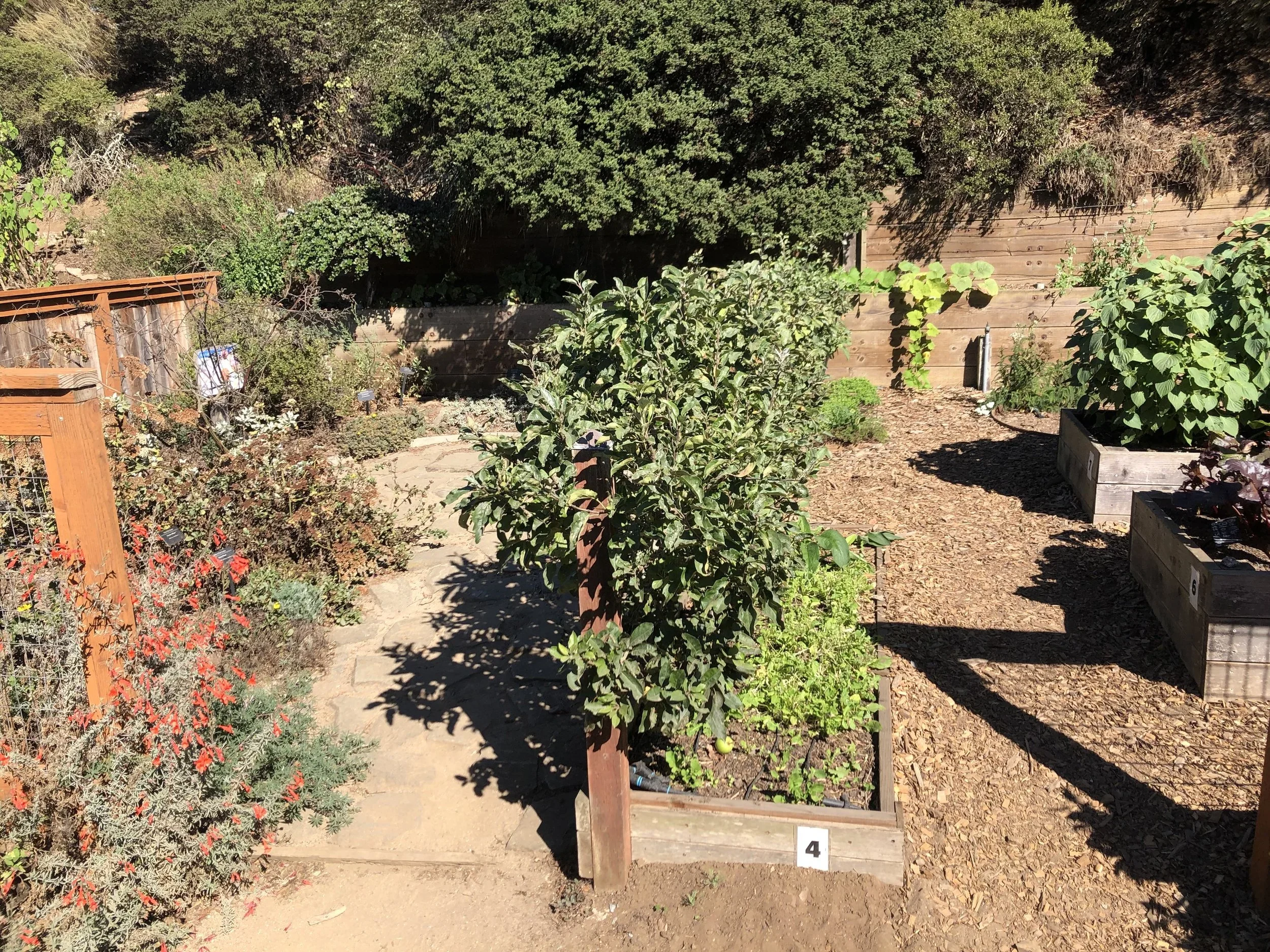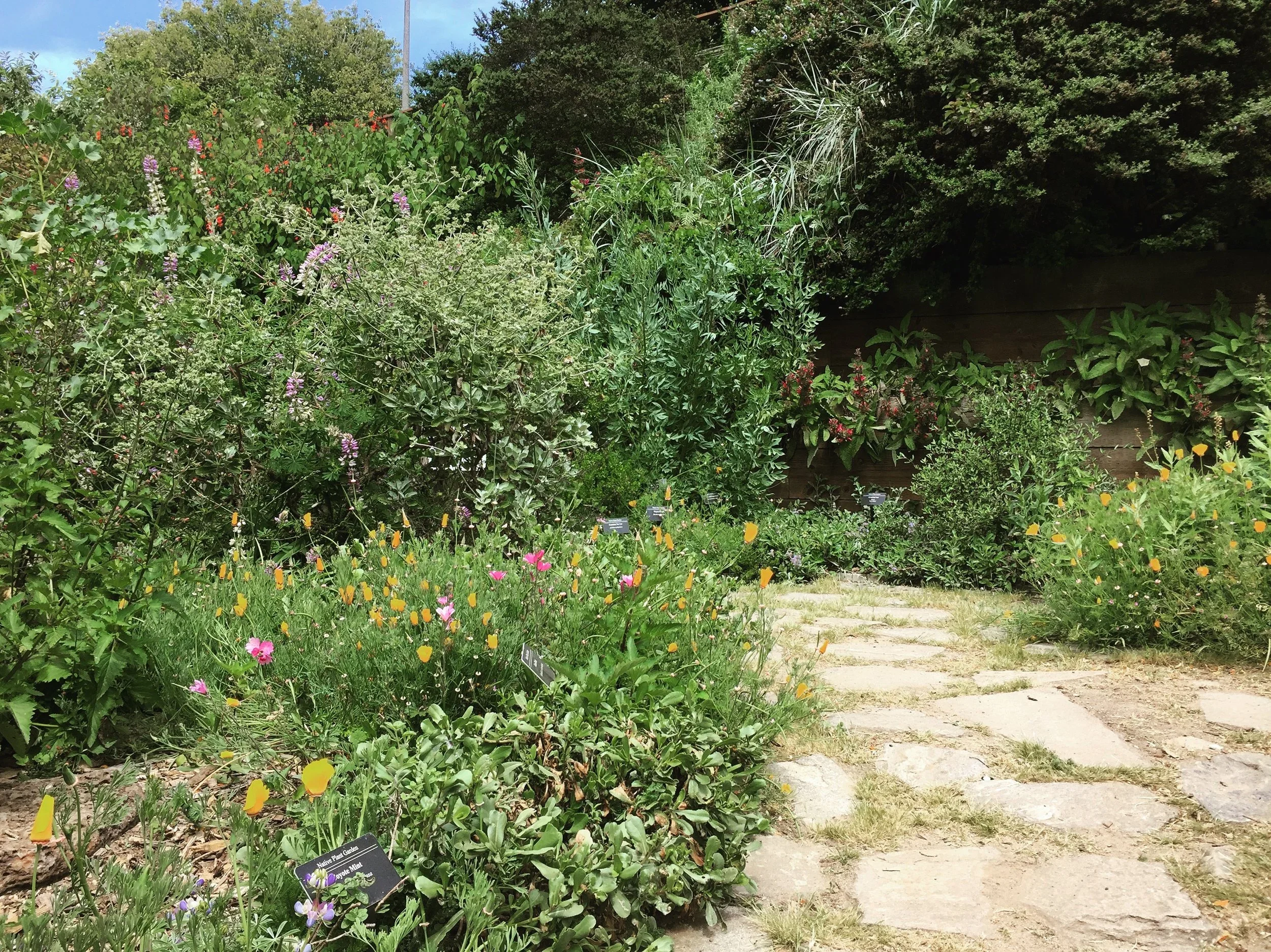Welcome to the GFE
Self-Guided Tour!
Stop 1: Compost
Stop 2: Victory Garden
📍Stop 3: Native Backyard
Stop 4: Carbon Sequestration
Stop 5: Shade Garden
You have found the Native Backyard.
We call the north side of this area (on the left as you enter) the Native Backyard because it consists of only California native plants.
All of the plants in this garden are indigenous to California and provide food, shelter, and nesting material for native wildlife. These plants coevolved with our weather patterns so they are adapted to our unique climate – long, mild, dry summers and rainy winters
Once established, native plants do not require any additional water, making them great choices for our drought-prone region.
Separating plants by their water needs, as in the Native Garden on the left and Victory Garden on the right, allows us to adjust irrigation based on the different plants’ needs.
This is called hydrozoning, where one area or set of plants receives a different amount of irrigation than a different area or set of plants.
During the summer and early fall, the Native Garden goes dormant and may look brown and dry. This is normal! These plants go dormant to conserve energy for growth and reproduction until there is enough moisture from winter rainfall.



